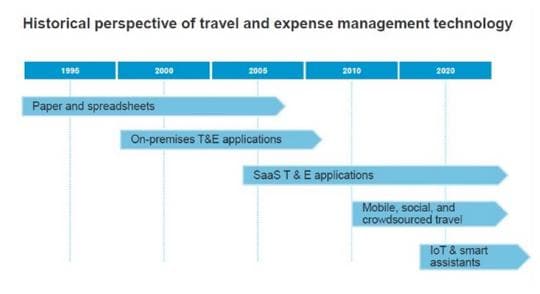A quick win for CIOs in financial transformation
In enterprise-size companies, CIOs and their teams align their IT strategies with their business strategies. At times, lending a hand to the business to help prioritize initiatives is essential. While HR, marketing and other departments have benefited from using cloud technologies to advance business initiatives, some would agree that finance departments have fallen behind and are stuck using archaic systems.
How CIOs can help digitally transform finance departments
A newly appointed CIO at a utility company helped lead the charge to modernize the organization’s travel and expense systems under its company-wide initiative to go digital. He referred to it as a “quick win” since it made a real difference for all employees, deployed rapidly and the transition didn’t bog down IT resources. This successful rollout opened the door to lead finance down the path to explore more complex digital transformation projects that they had initially resisted.
A 2016 Forrester survey found that 40% of businesses have a travel and expense solution that is three- to four-years old; and another 28% have one that’s at least five-years old.¹ Advancement in technologies, such as capturing receipts with embedded machine learning and human verification, have recently taken place so it may be worthwhile to check with finance to ensure the business is providing this for busy travelers.
CIOs need to ask their teams: “How can we help drive initiatives with finance, such as reducing employee spend (paying with company credit cards, non-PO spend), to help the company meet its cost savings goals? And, "What’s the cost of doing nothing?"
The following are three more questions every CIO should ask their teams if they want a “quick win” in advancing the digital transformation with finance by modernizing their travel and expense systems and processes.
1. Is the organization’s current expense solution unnecessarily using IT resources or outdated technology?
The Forrester graph below shows the historical perspective of travel and expense technology.² Some companies today are still using modules from on-premises software since it came free with an ERP system or a home-grown system. However, maintaining and supporting these systems can drain IT resources or rack up costs from system integrators. Ask your team: Is there a backlog of enhancement requests or report creation requests from the users that cannot be addressed in a reasonable amount of time? Has the vendor of the technology announced an “end of life” strategy for the product? Or is the product in “maintenance only” mode?
ERP providers have their eye on innovating in other areas of finance functionality and not investing in the expense module. Hence, companies that turn a blind eye and continue on this path are not benefiting from the innovations being developed of a positive end-user experience, integrating travel data to give a company an end to end view of spend or accessing from insightful, visual reports.

2. Is the organization favoring solutions that make the end-user experience an administrative nightmare? Are we keeping up the changing demographics of employees?
Automation and policy enforcement are critical factors, however, user experience is equally as important, according to a Gartner report.³ Savvy companies view all three factors equally when looking at ways to modernize their current processes—especially when they realize the changing demographics of their workforce and productivity savings. Today’s global workforce has changing expectations for how and when work gets done and the tools businesses need to use. And it’s not just millennials—all generations are now accustomed to, and expect, simple, easy-to-use experiences at work. A Forrester research report found that, “employees are embracing new digital capabilities in their personal lives to make purchases, and they now expect their employers to support those same capabilities as they relate to employee-generated spend.” ¹ Highly rated apps and approving expenses on the go are expected in today’s workforce, rather than completing expenses using a spreadsheet.
3. Is the business capturing all employee spend data in one place?
Without one platform to capture and aggregate all employee spend, companies risk not being compliant with government or industry regulations and increase their chances of fraud. Also, finance and others lose control and visibility into the finite details of where and how company dollars are being spent. While this spend eventually makes its way into the ledger, the ability to proactively monitor, report and analyze this spend gets lost. For example, employees are booking directly with airlines and other travel suppliers and getting reimbursed despite strict corporate policies. A “leakage” issue exists in mostly every company. New technology exists that can help companies capture this spend without disrupting the employee experience and reconciling it so companies can use it when negotiating with suppliers. IT may also be able to couch this initiative within a Big Data project.
To learn why companies shouldn’t wait to modernize their processes, watch The Cost of Doing Nothing: What is the Status Quo Costing You?
¹ Forrester Report: Financial Leaders Must Embrace T&E Solutions Strategically to Drive Growth and Innovation, Chris Taylor, September 2016.
² Forrester Consulting, “Harnessing the power of modern T&E tools for strategic financial management Forrester Consulting,” webinar, November 2016
³ Gartner Market Guide for Travel Expense Management Software, Chris Pang, 08 May 2017.